ANIMALS
30 Deadliest Animals In South America
Published
12 months agoon
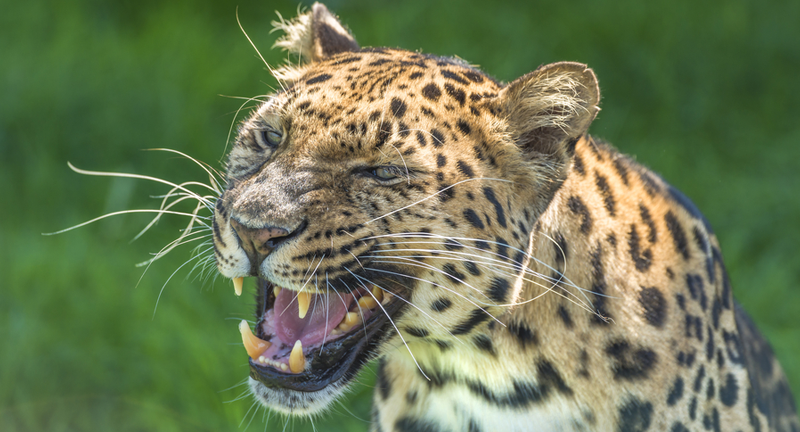
Shutterstock
South America, a continent brimming with a rich variety of life, is home to a fascinating and sometimes daunting collection of animals. Spanning from the dense, green canopy of the Amazon to the stark peaks of the Andes, this expansive region is a sanctuary for some of the planet’s most unique and fearsome creatures. A few of these animals are particularly notable, not just for their distinctive adaptations and crucial roles in their environments, but also for the risks they present to both their fellow species and humans. This overview explores the existence of these beings, from those that wield deadly venom to those with sheer physical might, providing a window into the untamed heart of South America and its inhabitants.
Jaguar
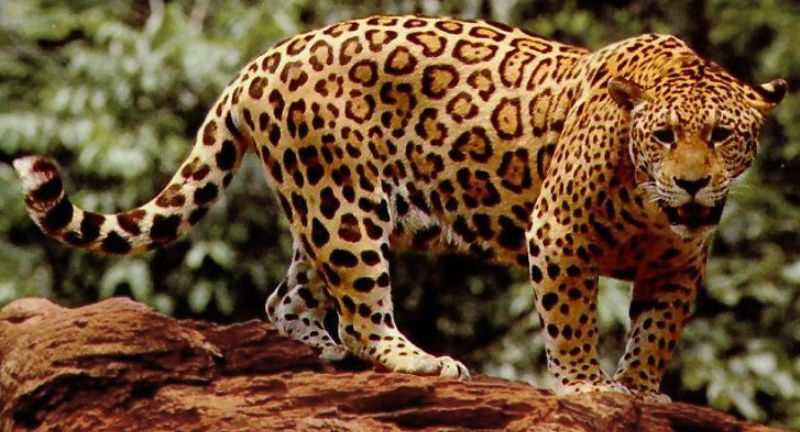
Wikipedia
Jaguars, South America’s largest big cats, reign supreme as apex predators, predominantly residing in the Amazon basin. These splendid creatures can tip the scales at over 100kg, embodying a blend of formidable strength, swift speed, and nimble agility, with the ability to sprint up to 50mph. Their dietary habits are diverse, preying on large animals like caimans, deer, and capybaras, which underscores their versatility and prowess across various terrains. Additionally, jaguars are celebrated for their stunning yet camouflaged fur, a feature that renders them nearly invisible in their natural habitats.
Bullet Ant
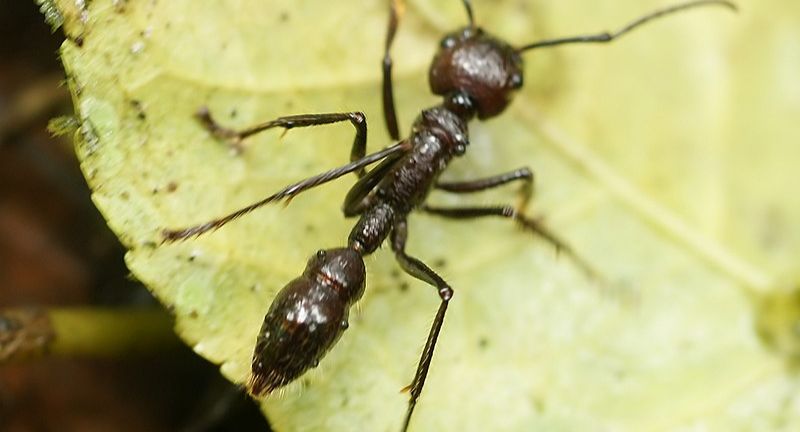
Wikipedia
The Bullet Ant is renowned for inflicting the most excruciating sting known among insects, likened to the experience of being shot, which is the origin of its name. These ants are widespread across the Amazon Rainforest and are integral to the rites of passage practiced by local tribes. In these ceremonies, young men wear gloves teeming with these ants to prove their resilience. The sting from a Bullet Ant can lead to intense pain, temporary paralysis in the lower extremities, and a profound burning sensation. However, the effects are localized and do not compromise vital organs. Despite the severe discomfort it causes, the sting is non-lethal, underscoring the ant’s significance in cultural rituals over being a mortal hazard.
Yellow Bellied Sea Snake
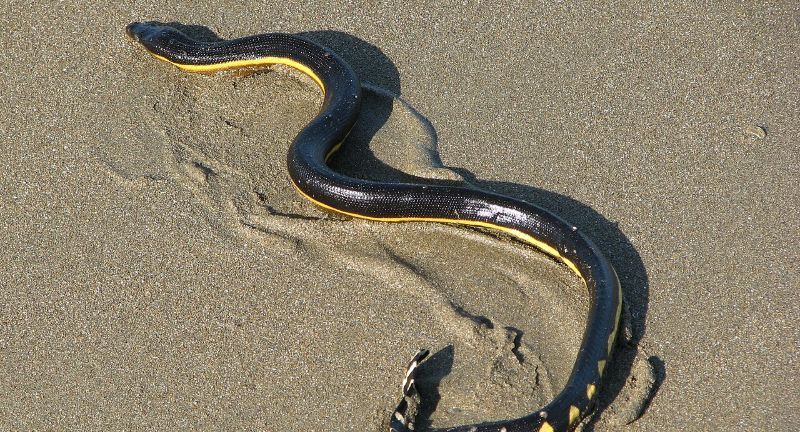
Wikipedia
The Yellow Bellied Sea Snake, a resident of tropical oceanic waters, is distinguished by its highly venomous bite. These snakes are pelagic, meaning they predominantly dwell in the vast expanses of the open sea, making human encounters with them a rare occurrence. The venom of the Yellow Bellied Sea Snake is neurotoxic, targeting the nervous system and causing muscle paralysis. Despite the potential danger they pose, incidents involving these snakes and humans are exceedingly uncommon. This is partly because they are not inherently aggressive and usually inhabit regions well beyond the reach of most beachgoers, highlighting their fascinating adaptation to life in the open ocean while underscoring the minimal risk they pose to people.
Giant Amazonian Leech
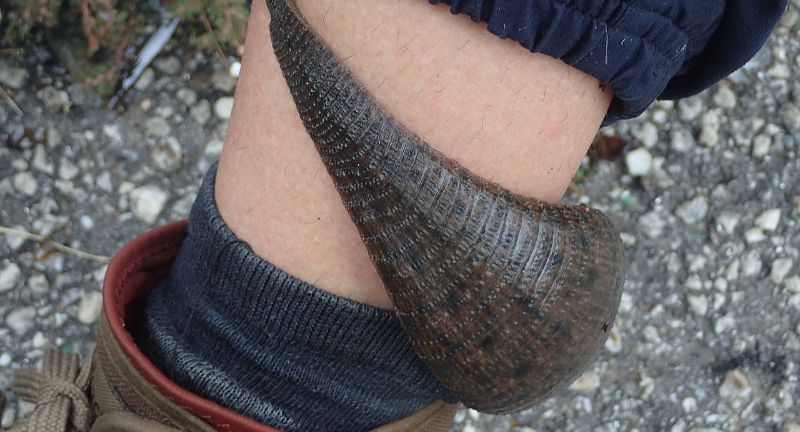
Wikipedia
The Giant Amazonian Leech stands out as one of the most sizable species of leeches, notable not just for its considerable dimensions but also for its capacity to ingest substantial amounts of blood from its hosts. Inhabiting the waters of the Amazon Basin, these leeches can achieve remarkable lengths and are known to store multiple times their body weight in blood from just one feeding session. Though their diet mainly consists of amphibians and small animals, there have been historical instances of these leeches attaching themselves to humans. While their relevance in medical contexts has diminished due to advancements in healthcare, the Giant Amazonian Leech continues to captivate interest with its extraordinary size and unique dietary practices.
Amazon River Dolphin
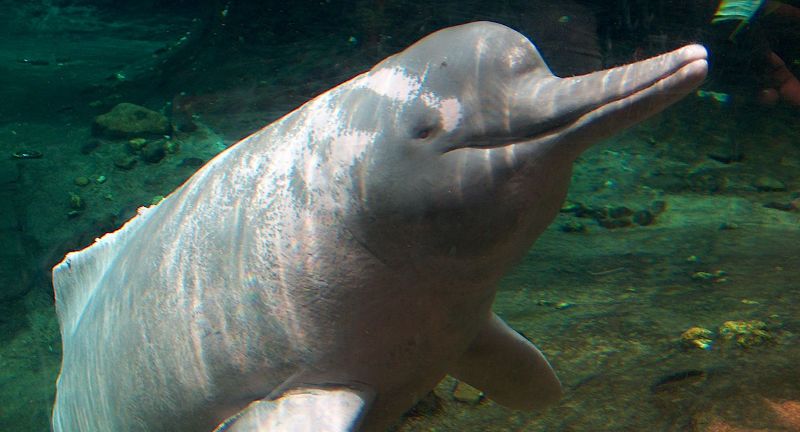
Wikipedia
The Amazon River Dolphin, affectionately known as the Pink Dolphin, is a unique species of freshwater dolphin found in the vast waterways of the Amazon and Orinoco river basins. These dolphins are distinguished by their remarkable pink hue, which ranges from a subtle light gray to a striking vivid pink, and are celebrated for their exceptional intelligence and friendly nature. A notable anatomical feature setting them apart from their ocean-dwelling relatives is their unusually flexible neck, which facilitates navigation through the intricate landscapes of flooded forests. Primarily feeding on fish, the Amazon River Dolphins are not just vital components of their aquatic ecosystems but also hold significant cultural value, featuring prominently in local folklore and serving as key indicators of the health of their riverine habitats.
Black Caiman
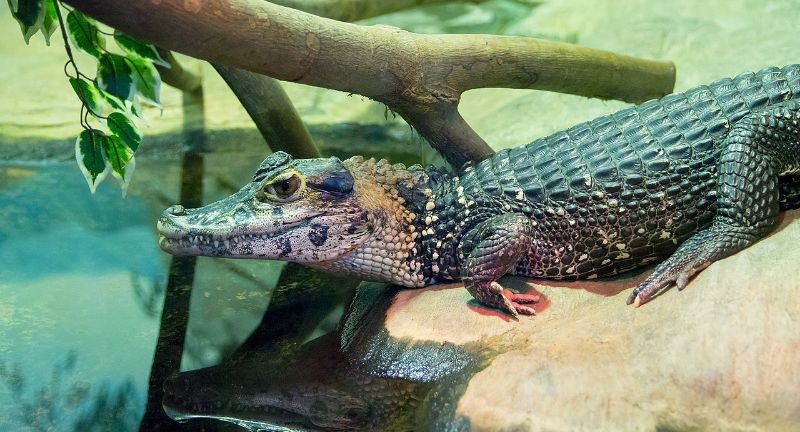
Wikipedia
The Black Caiman ranks as one of the Amazon’s most imposing predators, with the potential to reach lengths of up to 20 feet. These creatures are the apex of caiman species and hunt primarily at night, preying on fish, turtles, and birds, though they are opportunistic enough to target any mammal that strays too near. Once driven to the brink of extinction by hunting, their numbers have seen a resurgence in specific zones of the Amazon basin. Their dark coloration and nocturnal lifestyle afford them excellent camouflage, particularly in aquatic environments, making them a formidable presence to any creature caught off guard.
Brazilian Wandering Spider
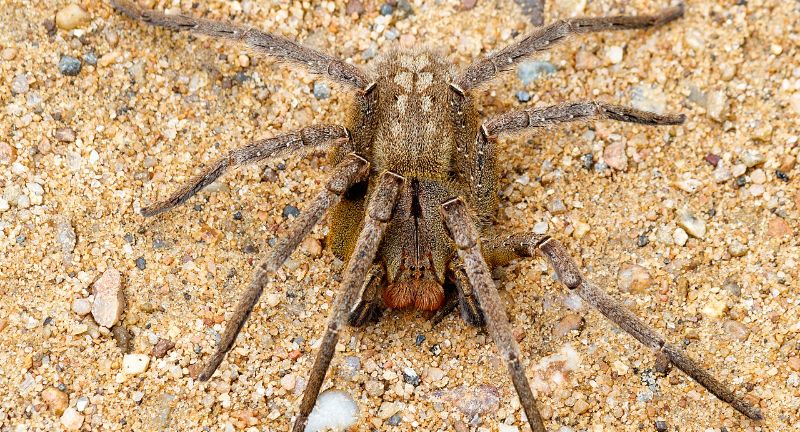
Wikipedia
The Brazilian Wandering Spider, often referred to as the banana spider, is recognized as the most venomous spider on the planet. Possessing a venom deadly enough to kill, it forgoes web-building to prowl the forest ground under the cover of night. Known for its aggressive nature and habit of venturing into human habitats, including hiding among banana bunches, it has earned a fearsome reputation. However, despite its potential danger, deaths are uncommon thanks to the accessibility of antivenom, showcasing a delicate equilibrium between human apprehension and the ability to live alongside nature’s formidable beings.
Green Anaconda
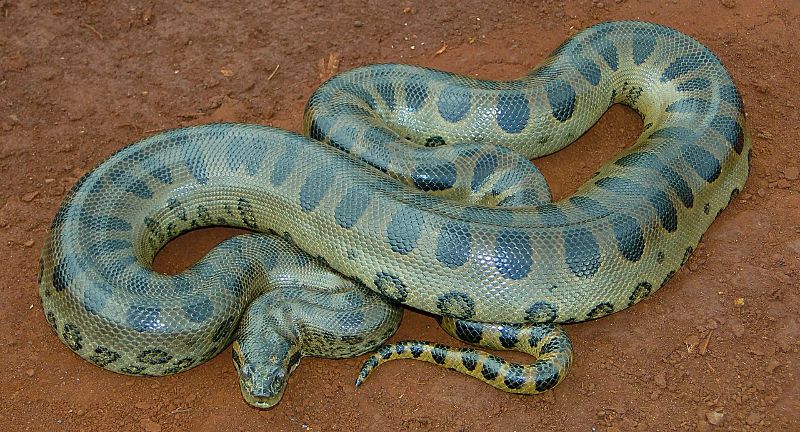
Wikipedia
The Green Anaconda holds the distinction of being the world’s heaviest and longest snake, positioning it as a top predator within the South American wilderness. Flourishing within the dense habitats of the Amazon rainforest, it utilizes the cover of swampy marshes and streams to ambush a wide range of prey, including caimans, capybaras, and even the formidable jaguars. Although it lacks venom, the anaconda’s incredible constricting ability enables it to overpower and consume large creatures whole. This snake embodies the Amazon’s raw power and enigma, symbolizing the dual aspects of danger and fascination that characterize this extensive tropical wilderness.
Scorpions
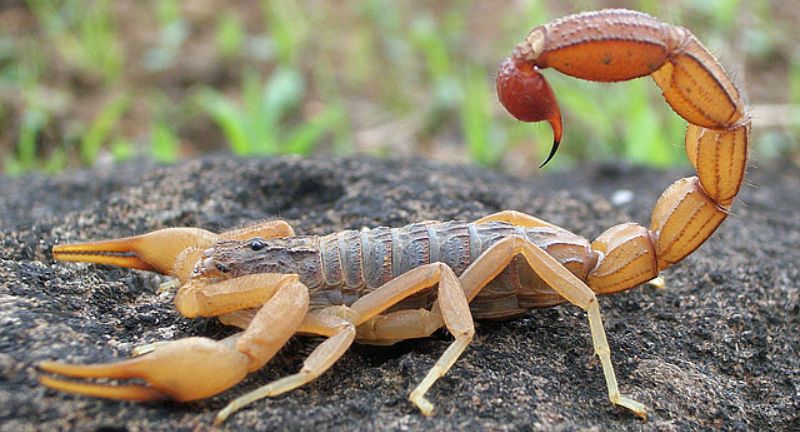
Wikipedia
In South America, scorpions showcase a wide spectrum of sizes and venom strengths, with certain species notorious for their lethal sting. These creatures inhabit diverse environments, spanning from arid deserts to lush rainforests, and they are even found within city limits, heightening the chances of human interactions. Their stings can inflict intense pain, significant swelling, and in uncommon instances, lead to fatalities, especially in vulnerable groups like the elderly and infants. Being vigilant and exercising caution in scorpion-prone areas are key strategies to dodge unpleasant encounters with these arachnids.
Vampire Bat
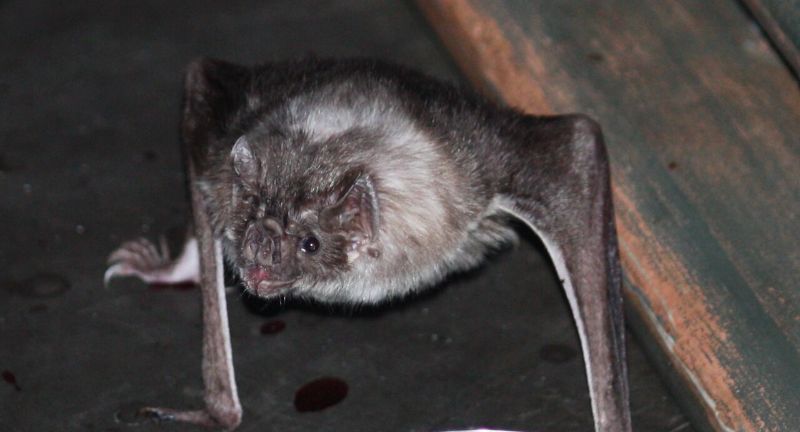
Wikipedia
Vampire Bats stand out in the mammal kingdom for their exclusive blood-based diet. Inhabiting regions across Central and South America, these bats are capable of spreading diseases like rabies through their bites. While they mainly target livestock for their blood meals, humans can also become victims if the opportunity arises. Effective management of vampire bat populations and immediate treatment of bites are critical steps in curbing the transmission of any diseases they might carry.
Bushmaster Snake
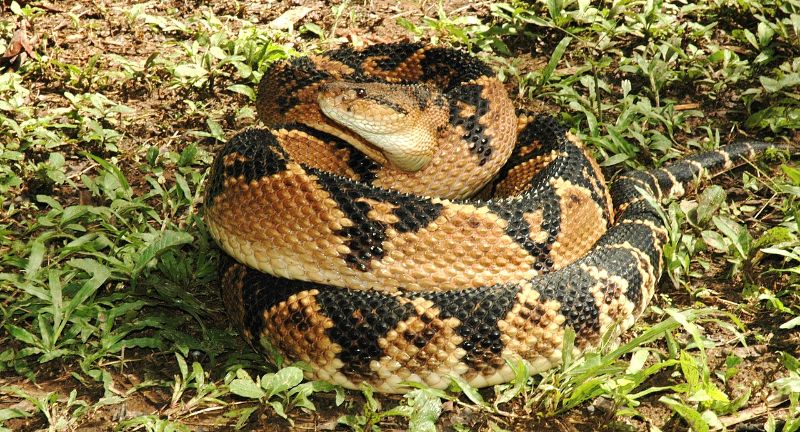
Wikipedia
The Bushmaster Snake holds the title of the largest venomous snake in the Americas, distinguished by its formidable aggression and highly toxic venom. This snake thrives in the rainforests of South America, favoring the shelter of humid and thick vegetation for camouflage and to ambush prey. A bite from a Bushmaster delivers venom that can lead to intense hemorrhaging and, without timely antivenom treatment, death. Although their reclusive behavior makes encounters with humans infrequent, the risk they represent to those who enter their domain is profound.
Andean Condor
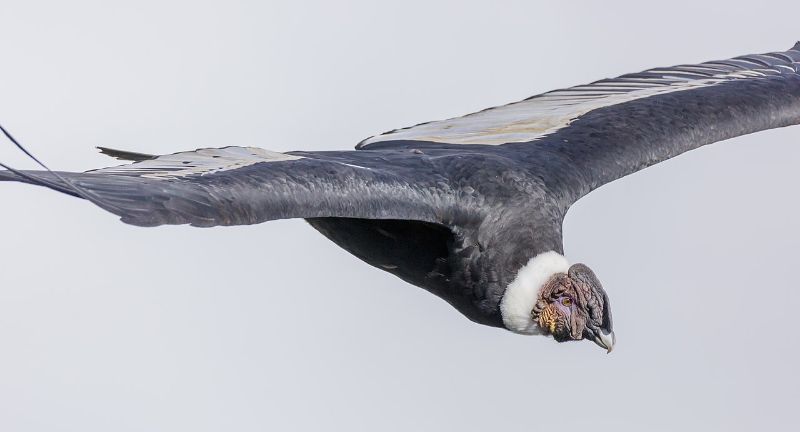
Wikipedia
The Andean Condor, one of the world’s most massive flying birds, boasts a wingspan exceeding 3 meters (10 feet), marking it as a symbol of both the splendor and the starkness of the natural world. Gliding through the Andean mountain air, this regal bird is not known to be aggressive towards humans. Instead, its critical role as a scavenger aids in maintaining the health of the ecosystem by helping to prevent the spread of disease from deceased creatures. The Andean Condor’s impressive size and strength render it an imposing figure in the wild. Moreover, its image is deeply embedded in South American cultural lore and mythology, where it stands as a potent emblem of both power and freedom.
Electric Eel
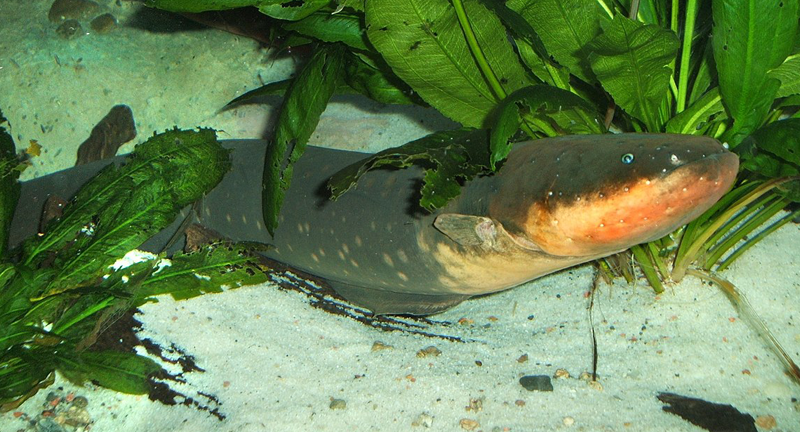
Wikipedia
Electric Eels, remarkable for their ability to produce a potent electric charge, utilize this unique capability to immobilize prey or ward off threats. Inhabiting the turbid waters of the Amazon and Orinoco river basins, these creatures are not actual eels but are classified within the knife fish family. They can generate an electric shock reaching up to 800 volts, a force powerful enough to inflict severe injury or even death upon a human. Acknowledging and respecting their natural environment is essential for anyone looking to safely navigate the freshwater ecosystems of South America.
Fer-de-Lance Snake
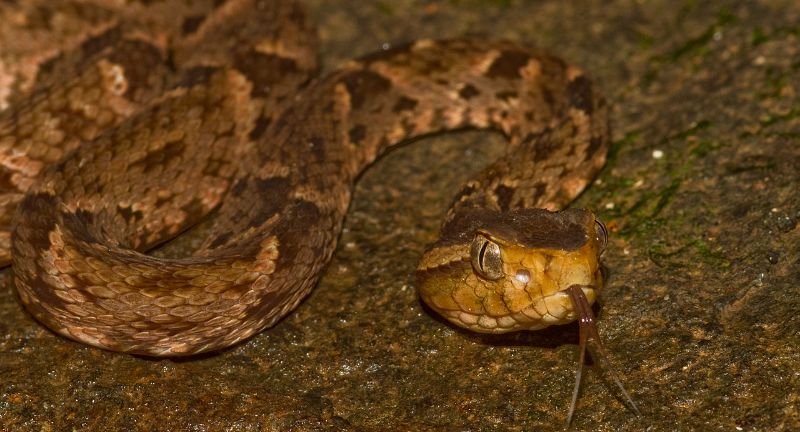
Wikipedia
The Fer-de-Lance Snake is among the most formidable and respected reptiles in South America, renowned for its powerful venom and tendency towards aggression. This snake is frequently involved in snakebite cases, largely because it often dwells near human settlements. The venom of the Fer-de-Lance is notably cytotoxic, leading to significant tissue destruction and potentially fatal outcomes if not treated quickly. Taking precautions and remaining vigilant in regions where this snake is prevalent can significantly reduce the likelihood of dangerous encounters.
Tarantulas
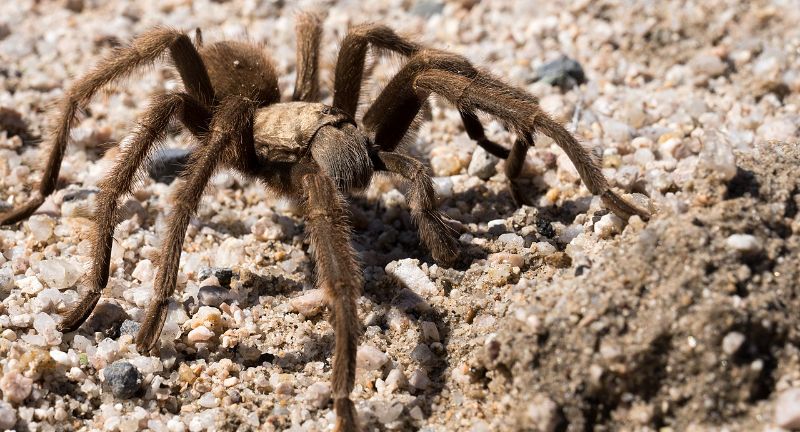
Wikipedia
South American tarantulas, some of the biggest spiders on the globe, often incite fear with their formidable appearance, yet they pose little threat to humans. While their bites may be painful, they are seldom hazardous, as their venom—though lethal to smaller creatures—generally doesn’t cause serious harm to humans. These night-time predators are more inclined to flee than fight, using their venom to capture prey rather than in defense against larger threats. Recognizing their habits and the ecological roles they play can enhance our respect for these often-misjudged arachnids.
South American Rattlesnake
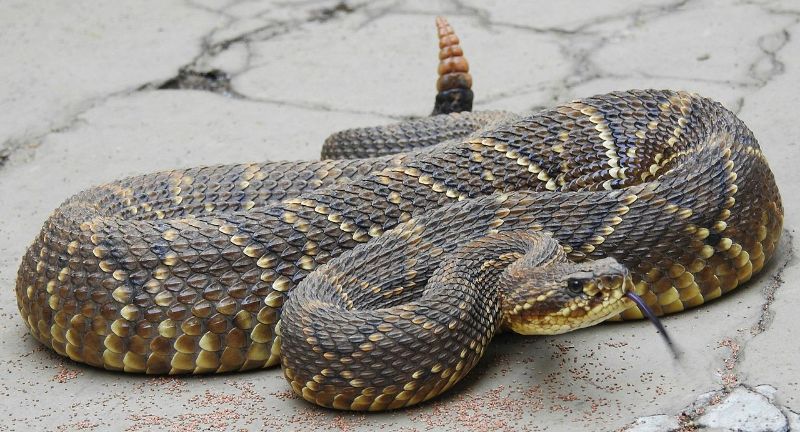
Wikipedia
The South American Rattlesnake, a venomous species widespread throughout the continent, is easily recognized by the unique rattle on its tail. This snake’s venom is particularly dangerous, capable of inducing neurotoxic and hemotoxic effects that can lead to muscle paralysis and bleeding complications. Immediate treatment with antivenom is essential for anyone bitten by this snake to increase chances of survival. Despite their perilous reputation, these rattlesnakes are vital to their ecosystems, playing an important role in managing rodent populations.
Red-Bellied Piranha
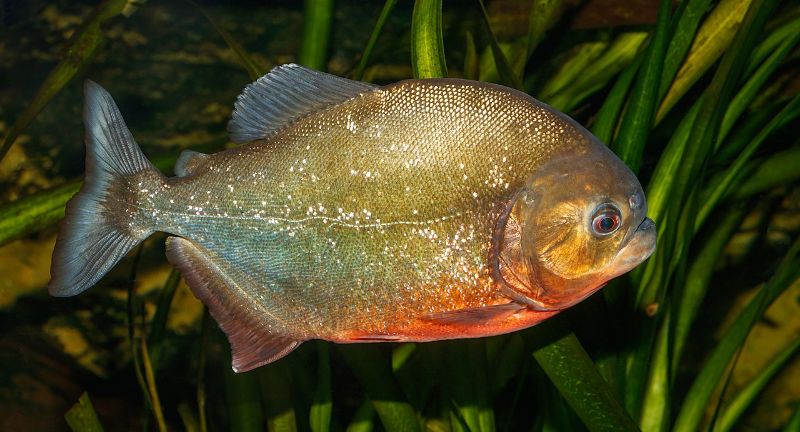
Wikipedia
Red-Bellied Piranhas, commonly depicted as fierce predators, actually have a diet that primarily includes fish, insects, and plant matter, aligning more with opportunistic feeding habits. The sensationalized feeding frenzies associated with them are uncommon, typically triggered by scarcity of food or direct provocation. Despite their notorious sharp teeth and strong bite, incidents of piranhas attacking humans are exceedingly rare and usually result in minor injuries. Gaining insight into their natural behaviors and dietary preferences helps in dispelling myths surrounding these emblematic Amazonian fish.
Kissing Bug
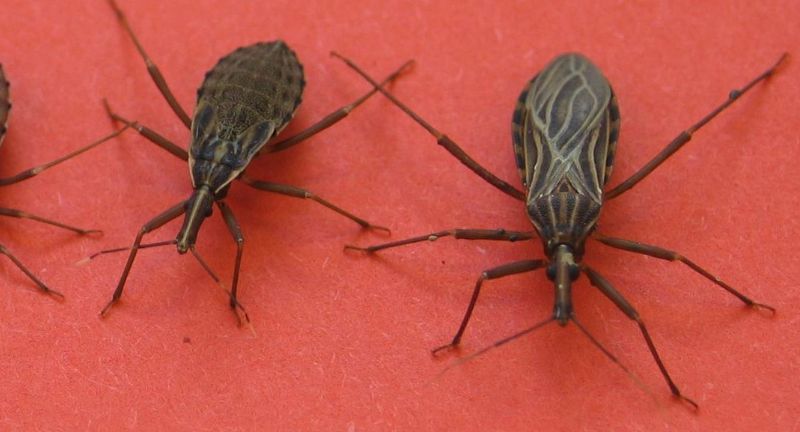
Wikipedia
The Kissing Bug, so named for its habit of biting humans on the face, is infamous for its role in transmitting Chagas disease. This pest is widespread throughout Central and South America, spreading the disease through an unsettling method: it defecates close to its bite wound, enabling the parasitic infection it harbors to penetrate the host’s bloodstream. Chagas disease poses significant health risks, leading to severe outcomes such as heart disease and gastrointestinal damage over time. Thus, managing populations of the Kissing Bug and preventing its bites are essential measures in the fight against the spread of Chagas disease.
Giant Otter
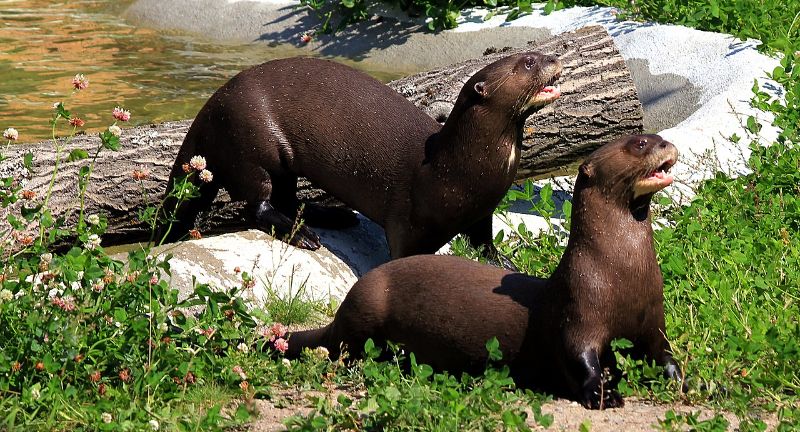
Wikipedia
The Giant Otter, an impressively large and sociable creature from the weasel family, thrives in the river systems of the Amazon, Orinoco, and La Plata in South America. Celebrated for their playful demeanor and tight-knit family groups, these otters can reach lengths of up to 6 feet, earning them the title of the largest otter species globally. As top predators in their watery realms, they mainly feast on fish, though their diet can also include small caimans and snakes. Despite their formidable presence, Giant Otters face the threat of endangerment, primarily due to the loss of their natural habitats, contamination of waterways, and the illegal fur trade.
Tropical Fire Ant
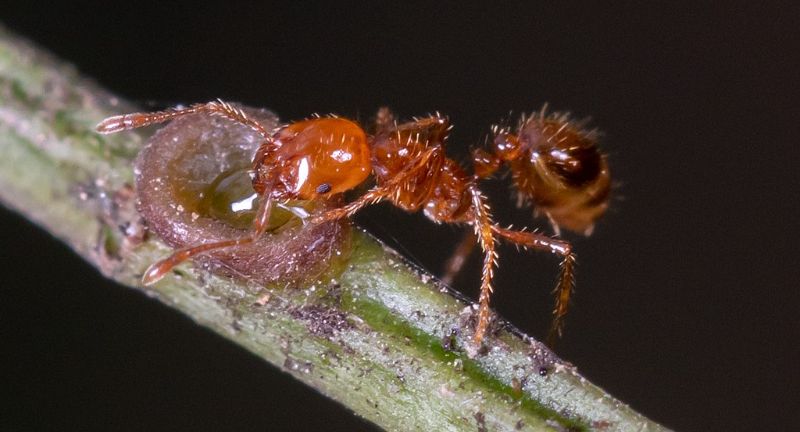
Wikipedia
Tropical Fire Ants are notorious for their combative nature and the intense sting they deliver, leading to symptoms such as redness, swelling, and severe discomfort. These ants have a strong presence in diverse environments across South America, showcasing remarkable adaptability by swiftly colonizing areas that have been disturbed. This trait renders them problematic in both countryside and city landscapes. The sting from these ants is not only acutely painful but can also provoke allergic reactions in individuals prone to such responses. Implementing efficient control strategies is critical to curbing their expansion and reducing the health risks they pose to both humans and animals.
Harpy Eagle
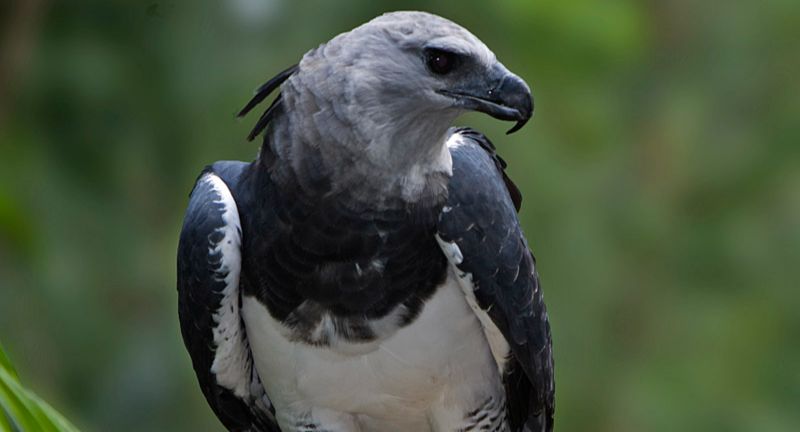
Wikipedia
The Harpy Eagle stands as the apex of avian predators in the rainforests of Central and South America, distinguished by its formidable strength and considerable size. Bearing talons comparable to a bear’s claws, it specializes in hunting medium-sized mammals like monkeys and sloths. As a top predator, it plays an essential role in preserving ecological equilibrium by regulating the numbers of its prey species. However, this majestic bird is confronted with significant threats due to habitat destruction and deforestation, which jeopardize its survival and risk placing it on the endangered species list.
Stingrays
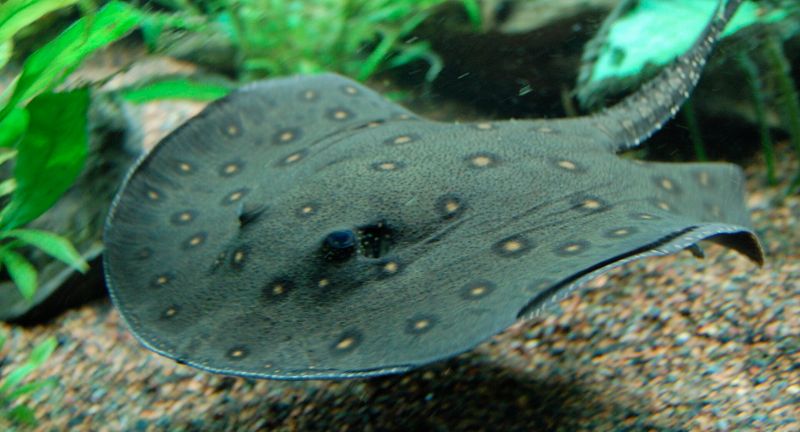
Wikipedia
Stingrays, inhabiting both freshwater and saltwater environments in South America, are characterized by their distinctive flat bodies and elongated, whip-like tails, which are armed with venomous spines. Typically placid by nature, stingrays resort to using their venomous barb for self-defense only if they feel threatened, such as when accidentally stepped on. A sting from one of these creatures can lead to severe pain, swelling, and, though rare, potentially fatal outcomes if the spine strikes a critical area. For those swimming or diving in regions where stingrays are present, exercising caution and showing respect for their natural habitats are crucial steps in preventing unwanted encounters.
Poisonous Caterpillars
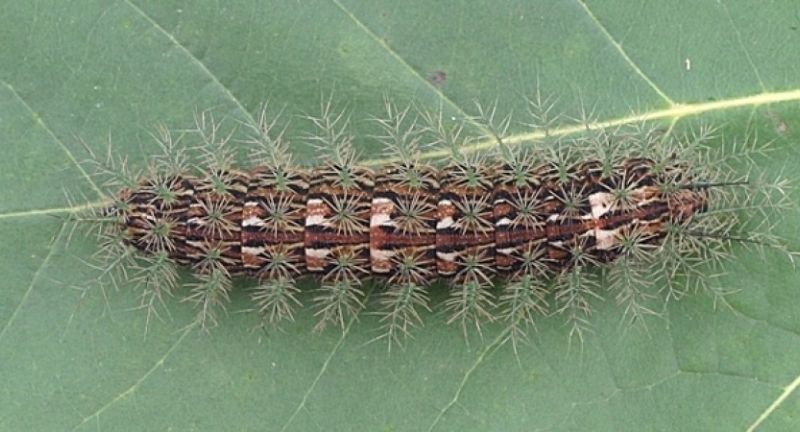
Wikipedia
Several species of poisonous caterpillars found in South America carry toxins that can inflict significant harm on both humans and animals. The mere contact with their spines is enough to trigger skin rashes, bleeding symptoms, and in extreme situations, could lead to death. These caterpillars frequently exhibit bright colors or unique patterns, serving as a natural warning sign to deter predators. To minimize the risk of adverse encounters, especially in areas where these caterpillars are common, being informed and steering clear of them is crucial.
Tegu Lizard
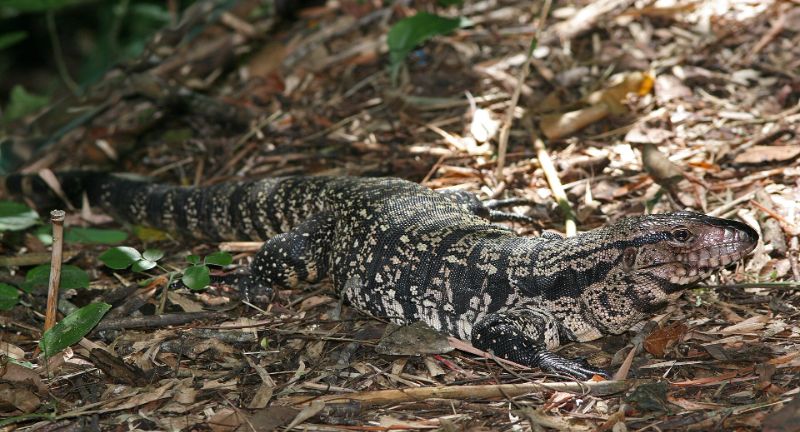
Wikipedia
Tegu Lizards, indigenous to South America, rank among the continent’s most sizable lizards, reaching lengths of up to 4 feet. These omnivorous reptiles are celebrated for their remarkable intelligence and ability to adapt to different environments. Although they do not typically exhibit aggression towards humans, they are equipped with sharp teeth and powerful jaws for defense if provoked or threatened. Tegus thrive in a range of habitats from forests to savannas and have shown an impressive ability to adjust to urban settings, sometimes venturing into homes in their quest for food. Conservation initiatives are vital for safeguarding their natural environments, which are under threat from habitat loss and the demands of the pet trade. By understanding and respecting Tegu Lizards’ natural behaviors, we can mitigate potential conflicts and support harmonious cohabitation between these reptiles and human communities.
Golden Poison Dart Frog
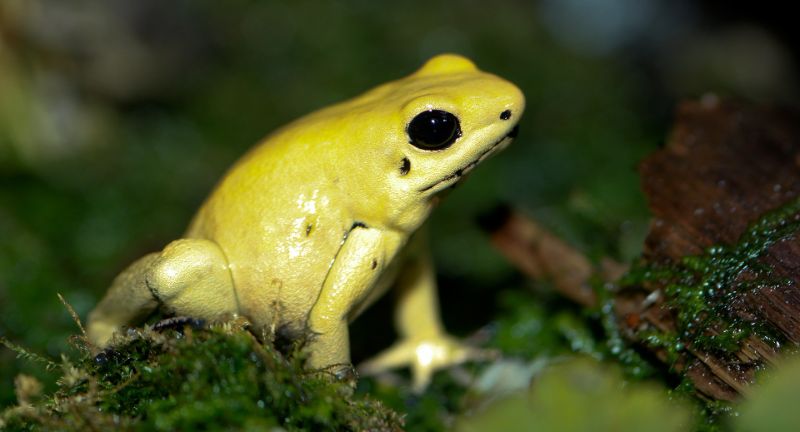
Wikipedia
The Golden Poison Dart Frog holds the title of the world’s deadliest frog, with a toxin so powerful it can take down 10 men. Sporting a typically bright yellow hue, though sometimes found in orange or green, this small yet formidable amphibian calls the Colombian rainforests its home. Despite its modest length of just about 2 inches, the potency of its poison has been utilized by local tribes, who apply it to their hunting darts. The source of this lethal toxicity lies in the frog’s diet of tiny insects, a fascinating aspect that still puzzles scientists on how these insects contribute to the frog’s deadly poison.
Spectacled Caiman
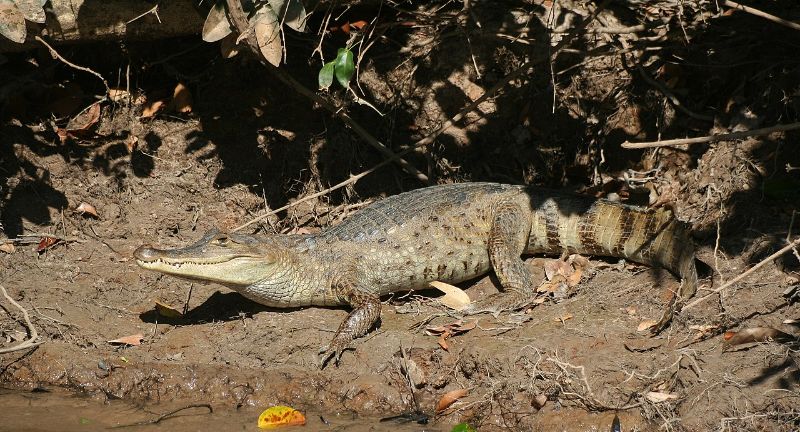
Wikipedia
The Spectacled Caiman, although less imposing than its relative the Black Caiman, plays a crucial role as a predator in its habitat. These caimans are versatile inhabitants of South America, thriving in diverse aquatic environments such as rivers, lakes, and marshlands. Primarily piscivorous, their diet also includes birds, mammals, and other reptiles. Thanks to concerted conservation efforts, the populations of Spectacled Caimans have maintained stability. Nevertheless, they are still confronted with challenges like habitat degradation and the pressures of illegal hunting, underscoring the ongoing need for protective measures to ensure their continued presence in the ecosystem.
Amazonian Giant Centipede
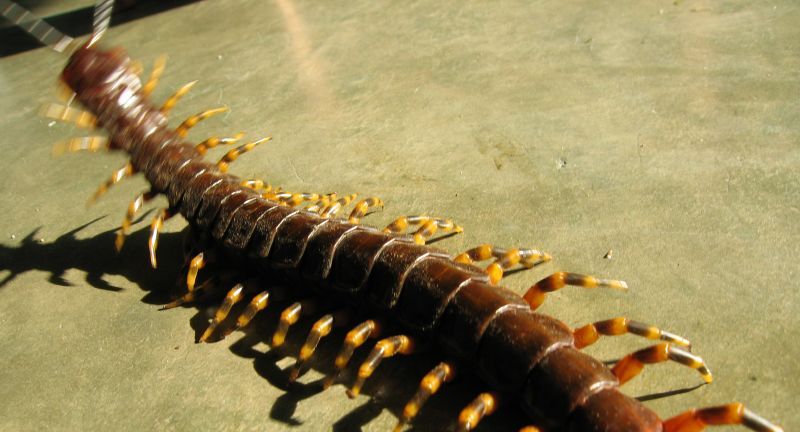
Wikipedia
The Amazonian Giant Centipede stands out as one of the largest centipedes, capable of growing to more than a foot in length. This formidable nocturnal hunter uses its potent venom to prey on a wide array of creatures, including insects, tarantulas, birds, and small mammals. Although its bite is notably painful for humans, leading to symptoms like severe swelling, fever, and weakness, this centipede is essential for maintaining ecological balance by regulating the populations of various pests in its environment. Despite its intimidating presence, the Amazonian Giant Centipede’s role in its ecosystem underscores the complexity and interdependence of predator-prey relationships.
South American Sea Lion
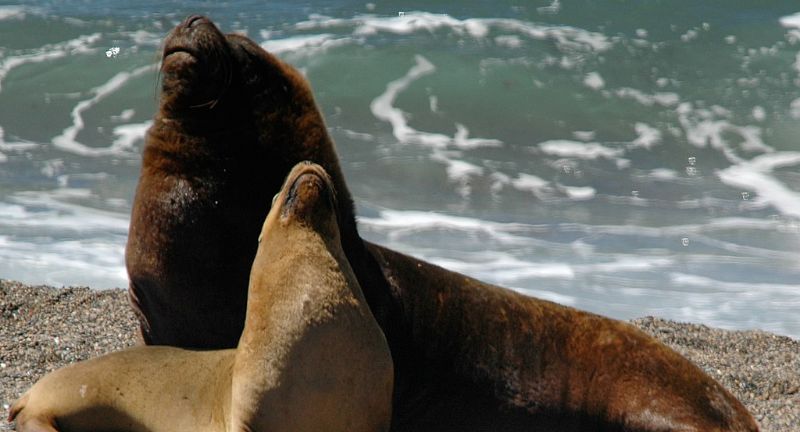
Wikipedia
South American Sea Lions grace the shores and offshore islands stretching from Peru to Brazil, marking their presence with distinctive loud barks and sociable tendencies, which have made them a highlight for tourists. These marine mammals may display aggression, particularly evident during the breeding season when males engage in intense territorial battles. Their diet predominantly consists of fish and squid, which occasionally puts them at odds with local fisheries over resources. This interaction can sometimes escalate into conflict, highlighting the delicate balance between wildlife and human economic activities along South America’s coasts.
Coral Snake
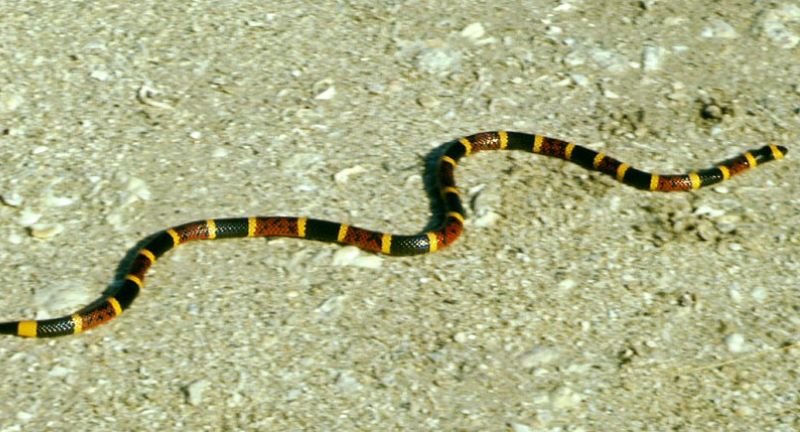
Wikipedia
Coral Snakes, easily recognized by their vivid color pattern, carry a clear warning of their highly toxic venom. These snakes are naturally shy and reclusive, often seeking to evade human interaction. However, should a bite occur, urgent medical attention is crucial; their venom is laced with neurotoxins capable of leading to respiratory failure and can be fatal without treatment. Found across a diverse range of South American environments, from the lushness of tropical rainforests to the aridity of dry regions, Coral Snakes embody the beauty and danger intertwined within nature, reminding us of the respect and caution these creatures command.
Candiru
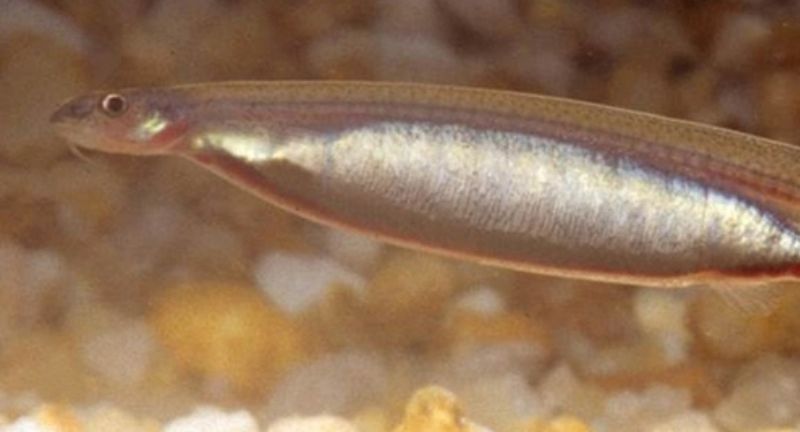
Wikipedia
The Candiru, or Toothpick Fish, is a diminutive parasitic freshwater catfish, notorious for its purported capability to invade the urethra of unsuspecting swimmers, although such incidents are exceptional and subject to debate. Originating from the Amazon River, this catfish usually sustains itself by consuming the blood of larger fish, slipping into their gills to do so. While tales of the Candiru’s attacks on humans have captivated and alarmed many, concrete scientific documentation on such occurrences is scarce, casting a shadow of skepticism on the widespread anecdotes. Nonetheless, the Candiru continues to be a subject of both fascination and wariness among the inhabitants and explorers of the Amazon, embodying one of the many mysteries lurking within its waters.
Conclusion
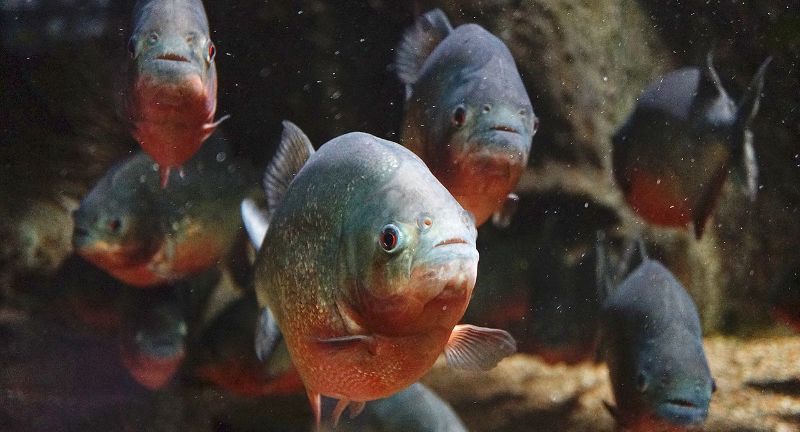
Shutterstock
Our journey through the formidable yet fascinating realm of South America’s deadliest creatures brings to light the continent’s lush diversity, where allure and peril share a fine equilibrium. Each creature, armed with distinct abilities and tactics for survival, contributes vitally to its ecosystem, even though some pose risks to human safety. Their presence emphasizes the critical need for conservation initiatives and a harmonious existence between humans and wildlife, highlighting the deep interconnections within the web of life. This exploration not only underlines the importance of ongoing research and conservation of these extraordinary species but also beckons us to appreciate the intricate and robust nature of the wild. In recognizing the beauty and challenges these creatures represent, we are reminded of our shared responsibility to protect and preserve the rich tapestry of life that thrives on this vibrant continent.
More Amazing Animals+
-


More – Orphaned bear cubs playing in tree and post-rescue…
-


27 Weird Animal Facts That You Didn’t Know
-
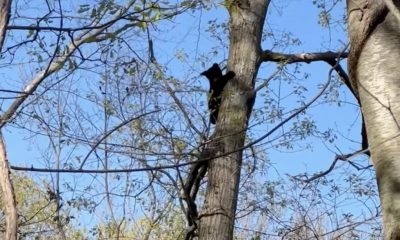

Orphaned bear cubs playing in tree after mother bear, Bobbi,…
-
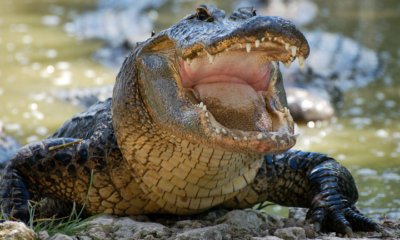

21 Deadliest Animals In North America
-


25 Reasons Why Huskies Make The Best Pets
-


Alligator arrest outside of a school in Charleston, SC
-
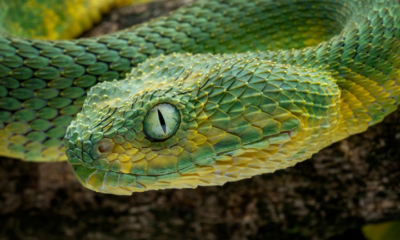

30 Most Venomous Animals In The World
-


Kibble Goes Refillable: Pet Food Company Cracks Down On Waste…
-
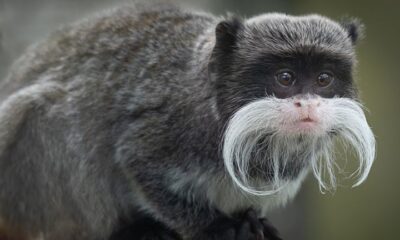

27 Animals That Look Like They Could Be A Cartoon…
-


Goats Ushered Across a Road to Aid in California Fire…
-
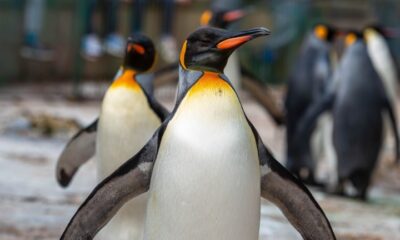

Why We Love Penguins
-
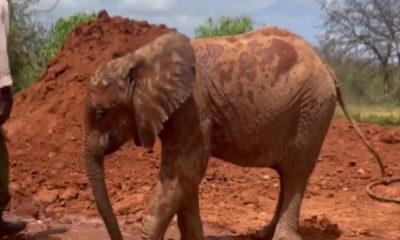

Rokka’s trunk might not yet be big enough to properly…
